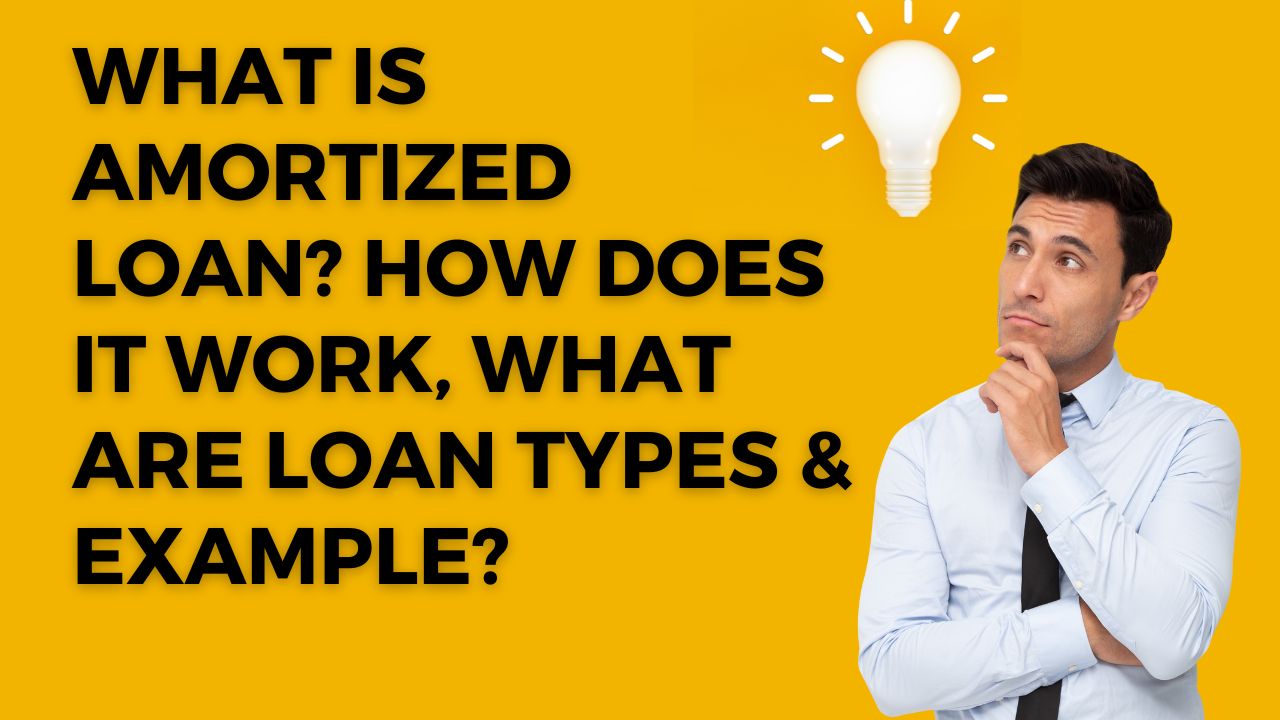Have you ever wondered what an amortized loan is and how it works? An amortized loan is a type of loan that is paid off in regular installments, usually over a period of time. In order to understand how an amortized loan works, it’s important to first understand the different types of loans and how they work.
How Does an Amortized Loan Work?
An amortized loan is a type of loan that is paid off in regular installments, usually over a period of time. Each payment has some portion of the principal and interest, with the amount determined by the loan’s terms such as interest rate, loan period, and payment frequency. As payments are made, the principal balance decreases and the interest charged decreases.
Types of loan
There are two main types of loans: secured and unsecured loans. A secured loan is one that is backed by collateral, such as a car or house. This means that if you fail to repay the loan, the lender can take the collateral from you. An unsecured loan is one that is not backed by collateral and doesn’t have any assets to back it up. It can be further classified into different types of loans:
1. Fixed-Rate Mortgage: A loan with a fixed interest rate and repayment amount for the life of the loan.
2. Adjustable-Rate Mortgage: A loan with a variable interest rate that changes over time.
3. Balloon Mortgage: A loan that requires a large, one-time payment at the end of the loan period.
4. Interest-Only Mortgage: A loan with payments that are only interest for a certain period of time.
5. FHA Loan: A loan insured by the Federal Housing Administration that is designed to help low- and moderate-income borrowers purchase a home.
6. Reverse Mortgage: A loan for seniors that allows them to access the equity in their home without having to make any monthly payments.
7. HELOC: A Home Equity Line of Credit, or HELOC, is a loan that allows homeowners to borrow against the equity in their home.
Benefits of amortized loan
The benefit of an amortized loan is that you can pay off the entire loan balance over a period of time. This means that you don’t have to worry about making a large lump sum payment at the end of the loan period. Furthermore, your interest rate is typically fixed throughout the life of the loan, so you know exactly how much you will be paying in interest throughout the life of the loan. Some of the major benefits are:
1. Fixed repayments: With an amortised loan, you know exactly what your repayment will be each month and when it’s due. This makes it easier to budget and plan financially as your repayment amount remains the same throughout the life of the loan.
2. Reduced interest costs: Making fixed repayments helps you to pay your loan off faster, as all repayments include both principal and interest. The more you pay back each month, the quicker your loan will be paid off and the less interest you will pay in total.
3. Option to pay extra: You have the option to pay extra on top of your regular repayment without incurring any additional fees, which helps you to reduce the term of your loan and save even more money in interest.
4. Prepayment protection: Amortised loans generally come with a prepayment protection feature, which ensures that you won’t incur any “early repayment penalties” if you choose to pay off the loan before its term is over.
5. Flexible terms: Amortised loans also come with flexible terms, allowing you to choose a loan term that best suits your financial needs.
Comparing amortised loan with others
When considering an amortized loan, it’s important to compare it with other types of loans, such as an unsecured loan or a home equity line of credit (HELOC). An unsecured loan is typically a higher-risk loan for the borrower, since there is no collateral to back it up. A HELOC is a type of loan in which you borrow from the equity in your home. The interest rate on a HELOC typically fluctuates with the market, making it a higher-risk loan for the borrower.
Why to consider an amortised loan?
If you’re looking for a loan with fixed payments and a set interest rate, then an amortized loan may be right for you. It’s important to consider your financial situation before taking out any type of loan, but an amortized loan can be an affordable way to borrow money for a car or home.
Example of an amortized loan
An example of an amortized loan is a 30-year mortgage. In this type of loan, you will pay the same amount each month for 30 years. The interest rate on the loan is fixed, and the principal balance decreases over the life of the loan. Amortized loans can be a great way to finance large purchases, such as cars and homes. They offer a fixed payment each month, so you know exactly how much you’ll be paying. Some of the most common examples of amortised loans are:
1. Car loan: A car loan is a type of amortised loan in which a borrower takes out a lump sum of money to buy a car and pays back the loan with interest over an agreed period of time.
2. Home mortgage: A home mortgage is an amortised loan in which a borrower borrows money to purchase a home and pays it back with interest over an agreed period of time.
3. Student loan: A student loan is an amortised loan in which a borrower borrows money to pay for their education and pays it back with interest over an agreed period of time.
4. Personal loan: A personal loan is an amortised loan in which a borrower borrows money for personal use and pays it back with interest over an agreed period of time.
Furthermore, you can pay off the loan over a period of time, which makes it easier to manage your budget. It’s important to consider your financial situation and compare different loan types before making any decisions.
Conclusion
Overall, an amortized loan can be a great way to finance a large purchase or investment. By allowing borrowers to spread their payments out over time, amortized loans offer greater flexibility and affordability than other loan options. However, it is important for applicants to understand the terms and conditions of the loan before signing any agreement, as well as any associated fees, to ensure that they are able to meet their obligations. Ultimately, amortized loans can be beneficial but must be considered carefully.
Click here to know how to invest in stocks for kids.
Hey! I am a content writer wiling to research, learn and write about something new everyday.




